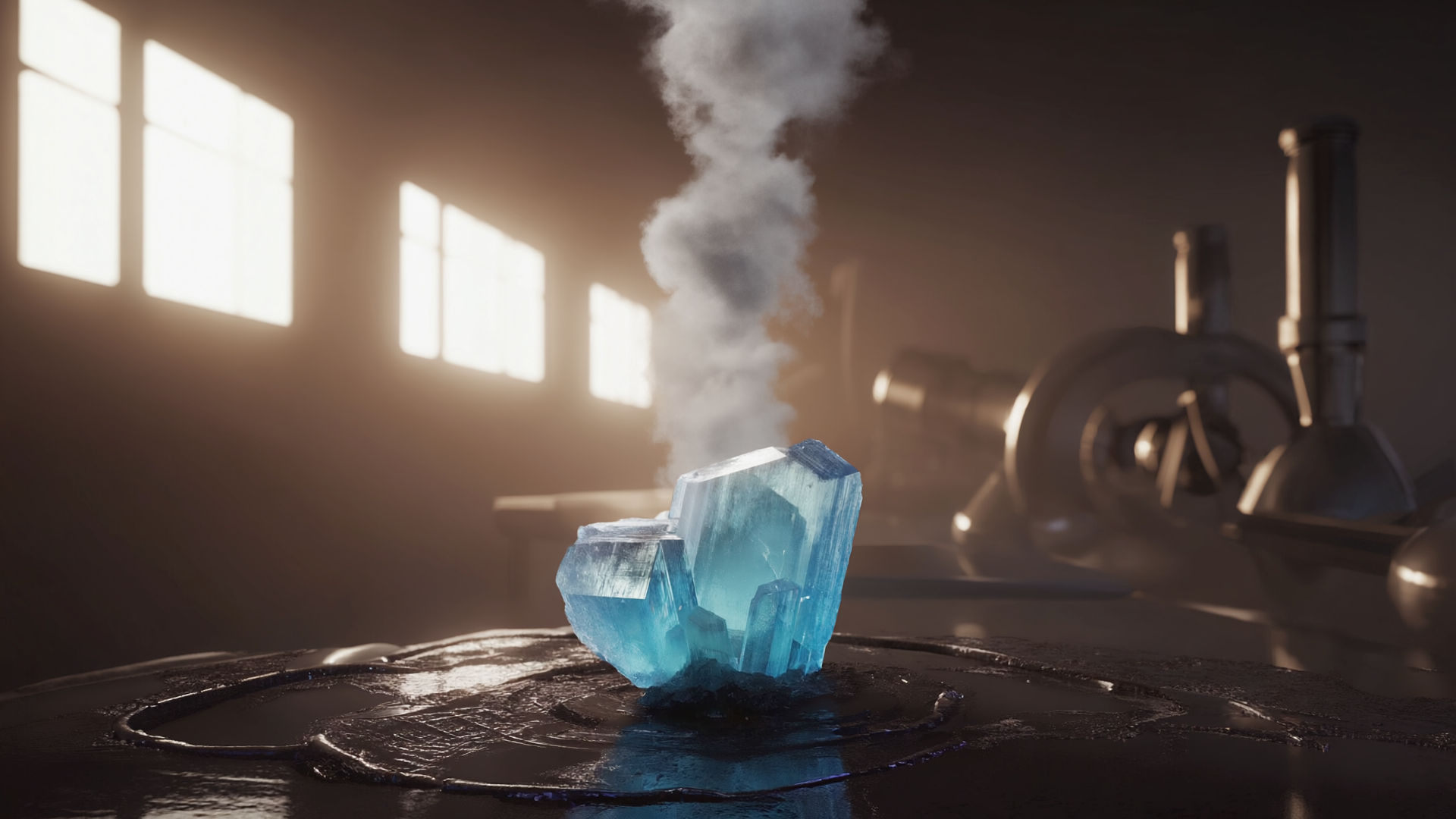By Donny Budinsky
A Small Atom with Big Implications
Sometimes the biggest questions about our world are answered by the smallest things. Helium is one of the lightest and tiniest atoms in the universe. It’s the same gas that fills balloons and makes your voice squeaky when inhaled. But helium isn’t just party fun—it shows up deep in Earth’s rocks in ways that raise profound questions about the age of our planet.
Where the Helium Comes From
Zircon crystals, found in granite, are often described as the “oldest minerals on Earth,” with some claimed to date back 4.4 billion years. When zircon forms, it gathers uranium atoms inside. Over time, uranium decays into lead—a process used by geologists to argue for deep time. But this decay does more than produce lead. For every atom of uranium-238 that decays into lead-206, eight helium atoms are released.
That helium is important. Unlike solid lead, helium is a gas. It’s incredibly small and slippery, able to squeeze through even the tiniest spaces in a crystal lattice. Over time, it naturally seeps out of minerals, much like air escaping a balloon or sand slipping through your fingers.
The Surprising Discovery
Here’s the puzzle: when scientists examine zircon crystals, they don’t just find uranium and lead (evidence of radioactive decay). They also find large amounts of helium still trapped inside. That’s shocking, because if these crystals were truly hundreds of millions or billions of years old, the helium should have leaked out long ago. Helium atoms diffuse through rock much faster than uranium decays.
In fact, by conventional decay rates, the amount of uranium-to-lead conversion inside zircons should represent over 1.5 billion years’ worth of radioactive decay. That much decay would produce enormous amounts of helium—but almost none of it should still be there. Yet it is.
Why This Matters
Laboratory experiments have directly measured how fast helium diffuses out of zircon crystals. The results are clear: helium leaks quickly. If the zircons were as old as claimed, they would be empty of helium today. The fact that so much helium remains tells us two things:
- A great deal of radioactive decay has occurred.
- That decay must have happened recently, on the scale of thousands—not billions—of years.
Creation scientists such as Dr. Russell Humphreys have compared measured helium leakage rates with the amount of helium present. The numbers line up consistently with an Earth age of about 6,000–10,000 years—a dramatic contrast to the billions of years assumed by conventional geology.
There is a third possibility in explaining the abundance of helium found in zircon crystals that is consistent with Young Earth Creation—but also does not require accelerated nuclear decay. This position will be explained in a future article on the topic. The most important aspect of this article is to show why the billions of years paradigm simply cannot account for this incredible data. Biblical Creationists are free to speculate as to which model within the Young Earth blueprint best explains this evidence.
Responses to Critics: Strength Through Scrutiny
Science thrives on scrutiny, and the RATE helium study has endured. Dr. Humphreys published a follow-up titled “Helium Evidence for a Young World Continues to Confound Critics.” In it, he responds to a range of objections raised by skeptics.
At the heart of the article is a clear, two-column table listing critics’ objections alongside detailed responses. Far from weakening the case, these critiques only sharpened it. Independent helium-leak measurements, performed without assumptions or software bias, matched the young-earth predictions closely while diverging from the old-earth expectations.
This isn’t scientific bravado—it’s confidence grounded in data, transparency, and reproducible results. If you’d like to dig deeper into the technical dialogue, you can read Humphreys’ detailed responses here: Helium Evidence for a Young World Continues to Confound Critics.
A Challenge to Deep Time
If Earth were truly billions of years old, zircon crystals would not still be holding helium today. The helium would have slipped away long ago, just like air escaping a leaky balloon. Its continued presence provides powerful evidence that the conventional old-earth timeline does not fit the facts. Instead, helium in zircons points toward a much younger Earth—measured in thousands of years.
Conclusion: Tiny Atoms, Big Questions
Helium may be small, but its message is mighty. The discovery of helium still locked inside Earth’s rocks challenges long-held assumptions about time and history. For those willing to follow the evidence, zircon crystals whisper a radical truth: our planet may be far younger than we’ve been led to believe.
References & Suggested Reading
- Humphreys, D. R., Austin, S. A., Baumgardner, J. R., & Snelling, A. A. (2003). Helium diffusion rates support accelerated nuclear decay. Proceedings of the Fifth International Conference on Creationism, 175–195. Creation Science Fellowship.
- Vardiman, L., Snelling, A. A., & Chaffin, E. F. (Eds.). (2005). Radioisotopes and the Age of the Earth: Results of a Young-Earth Creationist Research Initiative (Vol. 2). Institute for Creation Research; Creation Research Society.
- Humphreys, D. R. (2005). Young helium diffusion age of zircons supports accelerated nuclear decay. Journal of Creation, 19(2), 23–29.
- Humphreys, D. R. (2008, November 21). Helium evidence for a young world continues to confound critics. Creation.com. Retrieved from https://creation.com/en/articles/helium-evidence-for-a-young-world-continues-to-confound-critics
Also, please see this article (written by Donny Budinsky and Matt Nailor) on another amazing line of evidence (Carbon-14) confirming Young Earth Creation:
https://standingfortruthministries.com/wp-content/uploads/2025/09/FInal-Version-of-Radiocarbon-Revelations.pdf



